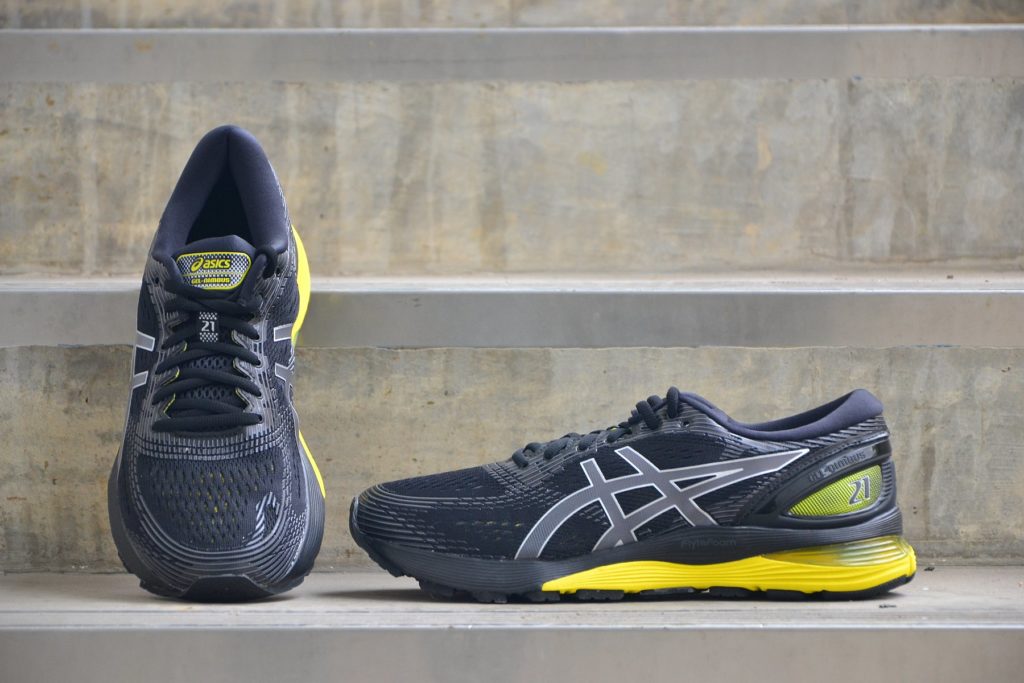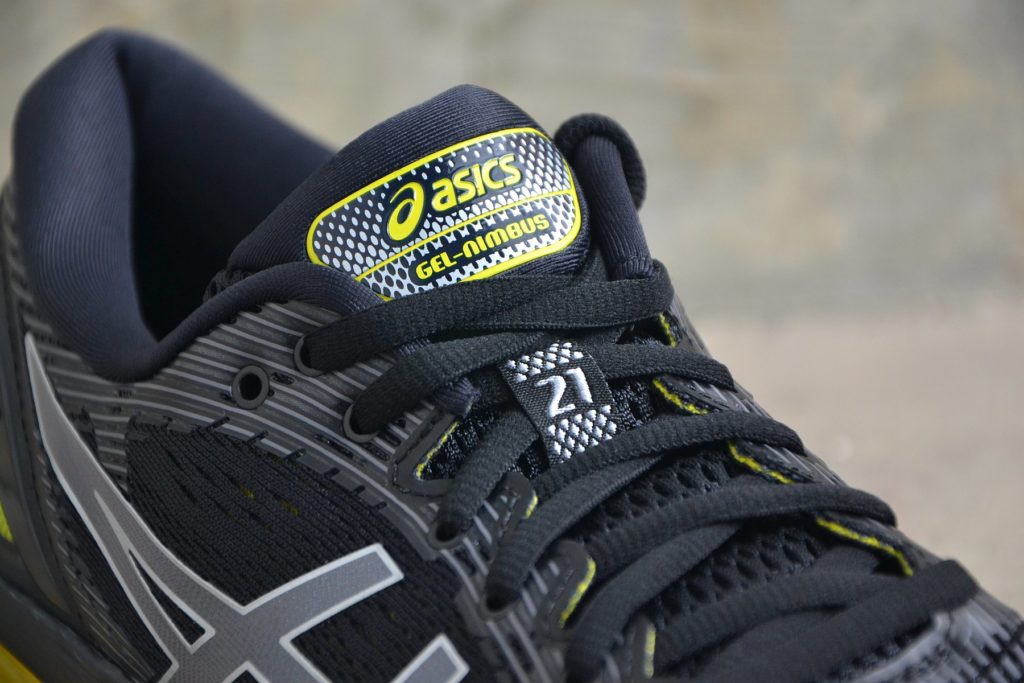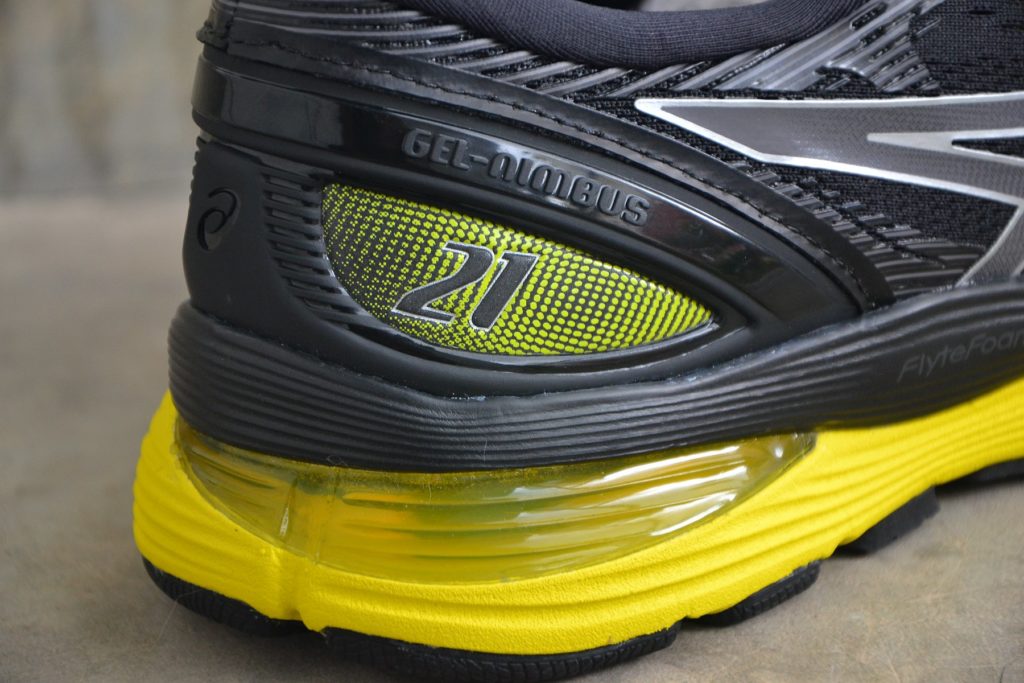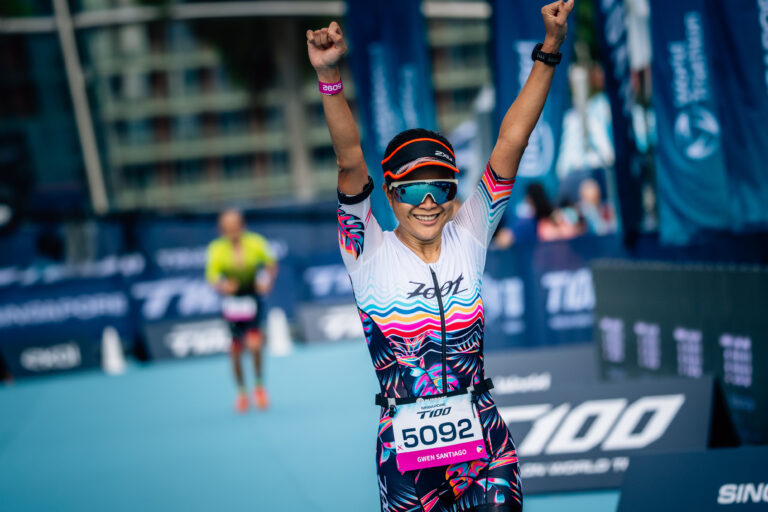Summary
- Heel-to-Toe Drop: 10mm
- Shoe Type: Neutral
- Fit: True to size
- Toe Box: Medium
- Ride: Stiff
- Designed For: Road Running
- Best Used For: Long Distance Runs
- Not Suitable For: Heel-strikers

Pros
- FlyteFoam Propel provides good overall cushioning, especially at the front
- Jacquard mesh keeps the shoe breathable, keeping the feet cool
- Stable heel support
Cons
- Doesn’t really do much for short distance running
Introduction
Like so many other people, I do wish that I had more time to run long distances. Thanks to work commitments, family, a new puppy, and other convenient excuses, fitting one long and short run a week into the schedule now is about as much as I can get these days.
The GEL-Nimbus 21 is the latest in my train of ASICS shoes that have included the GEL-Kayano 25, GEL-Kayano 23 and Metarun, so this gave me the perfect chance to evaluate what I feel about the Nimbus 21.

Running Review
As with most new shoes, the midsole takes some time to break in before it reaches a comfortable level of suppleness. My initial impression was that the GEL-Nimbus 21 feels significantly lighter and more breathable than the Kayano series of shoes. I was pleasantly surprised by the level of cushioning and support delivered despite the weight difference. First time out, I completed 18km in 1:30:02 on flat tarmac, and as the shoe broke in, it felt better with distance.
Having already completed a long run that week, I made the conscious decision to go for a short 2.4km run to justify my arbitrary quota of running twice a week. Contrary to my previous route, I chose a park connector that comprised mostly of slopes. Interestingly enough, I felt that running up a slope felt easier, particularly when my feet pushed off from the ground. There was a tangible amount of spring in the shoe’s step-off.

For my next run, I took a scenic route from East Coast Park to the Marina Bay Sands. As the shoes were now nicely seasoned and run in, I found myself reverting to my usual running style, which involves minimal lift of my feet from the ground combined with considerable heel striking. Midway through the 12km run, I decided to lean forward slightly, so as to better utilise the cushioning at the front of the shoe. While it did help in the push-off aspect, I found my lower calves to be over-compensating for this change, which wasn’t ideal for me. Despite that, I would think this would be ideal for runners who run on the balls of their feet. Overall timing of 1:03:01 could have been better but I would attribute that more to my style than the shoes, which held up very well.
Conclusion
The ASICS FlyteFoam Propel cushioning and the breathable jacquard mesh does indeed provide noticeable improvements to the overall running experience. All in all, I will probably keep this shoe in rotation for my mid-long distance runs.







Comment (0)